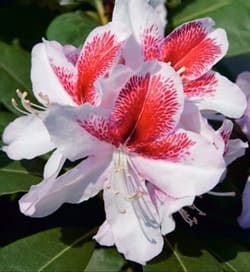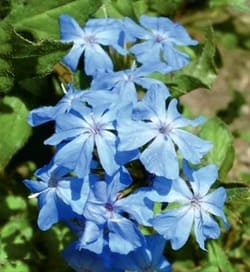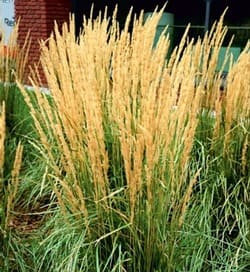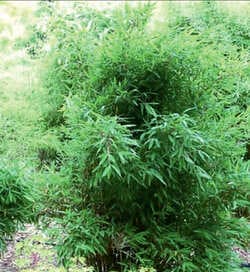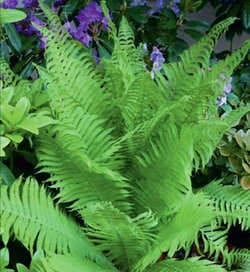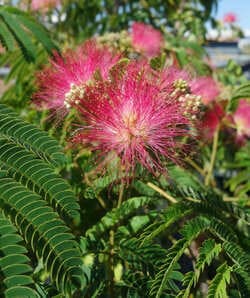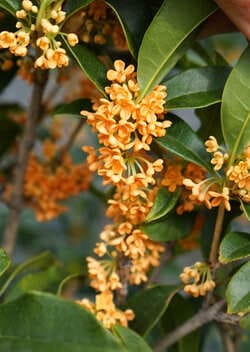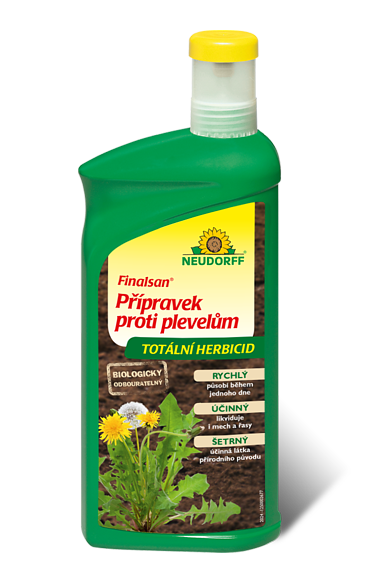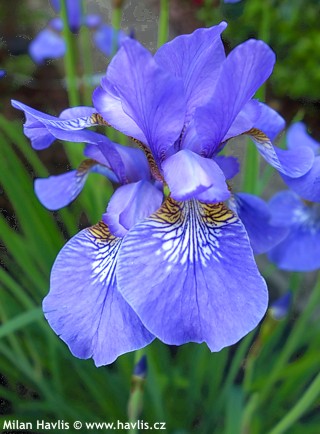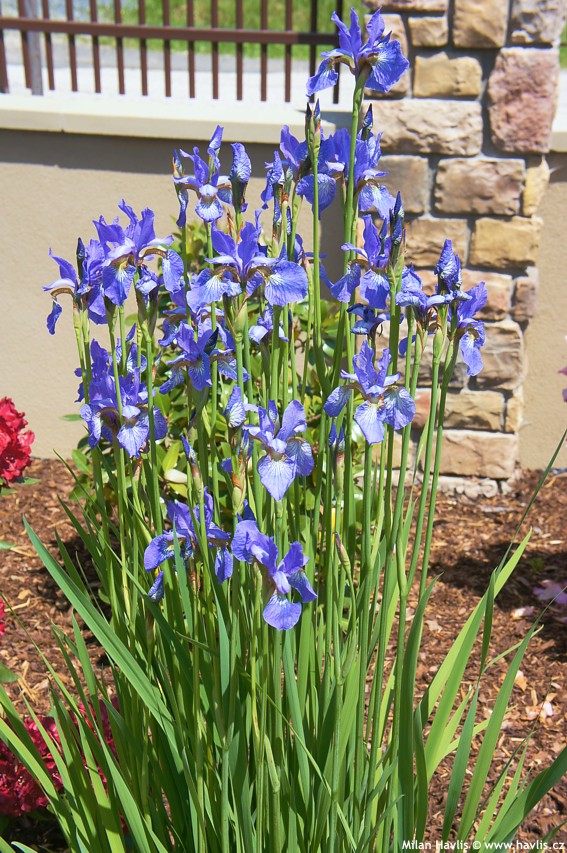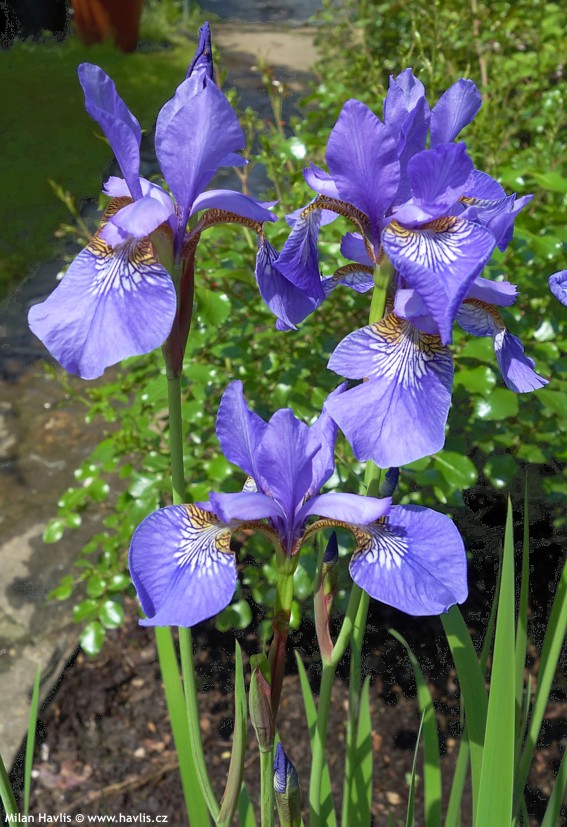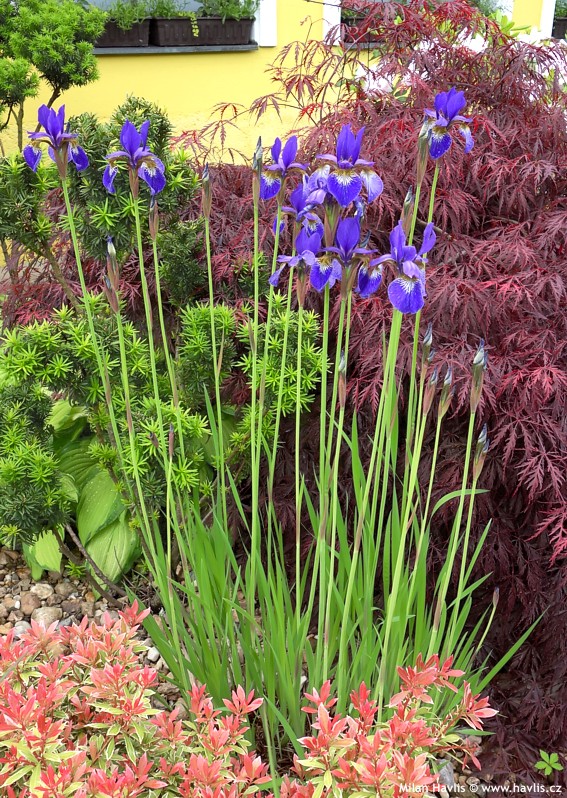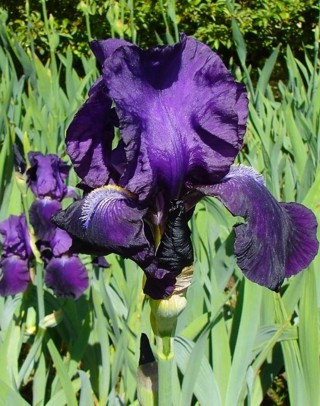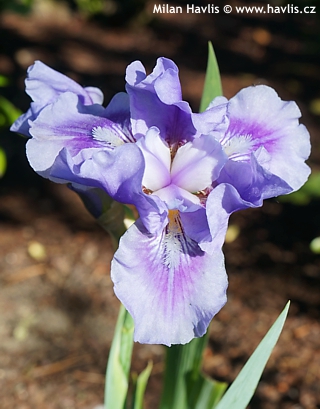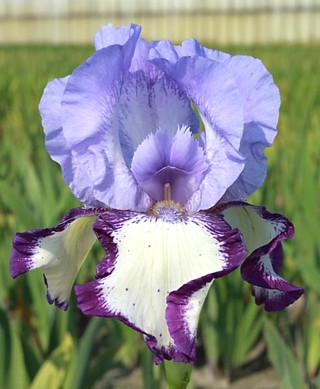Iris setosa beachhead iris
Beachhead iris is one of many wild species grown in cold and temperate regions of Northern Hemisphere. Its native habitat is Alaska, Canada, Siberia, as northern parts of Asia (China, Korea as well as Japan).
Most common and possible the most beautiful is the blue version of beachhead iris. It produces showy-structured, blue to rich violet-blue flowers with white and golden yellow marbling of the tongue. Flowering begins in late May and continues till June atop slim but strong, well-branched stems which are about 1m tall on adult plants. Sword-like leaves are narrow and mid to light green. It will look great both in perennial beds of cottage gardens, and modern city landscapes accompanied by cushion-like shrubs or dense groundcovers.
Beachhead iris loves moist or partly wet sites, though it will live in almost any ground apart from heavy clay which tends to dry out like a rock in summer. It will cope in dry, sandy soil as well as limey soil. Full sun or part shade are best. The plants spread with their rhizomes but are not invasive. Unwanted new rhizomes can easily be dug out and transplanted somewhere else. Occasional fertilizing is welcome to enhance flowering and plant health. Fully hardy to min. -40°C (USDA zone 3).
Last update 04-06-2017












